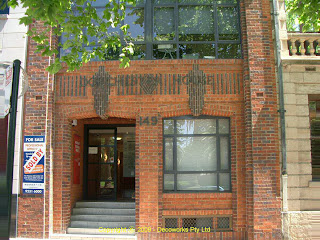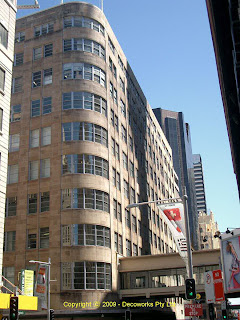Paramount Picture Studios

Constructed in 1940 to a design by Herbert, Wilson & Pynor the former Paramount Picture Studios building at 53-55 Brisbane Street, Surry Hills, is one of few surviving buildings recording the boom in cinema development in the 1930s and its growing importance for mass entertainment and information. The choice of site records the importance of this area of the city as an early focus for the film industry especially with the former 20th Century Fox building next door and the Hotel Hollywood just down the road. It is significant for the use of glazed terracotta tiles in a low scale building. Corner of the building Sources: Sydney Heritage Listings





